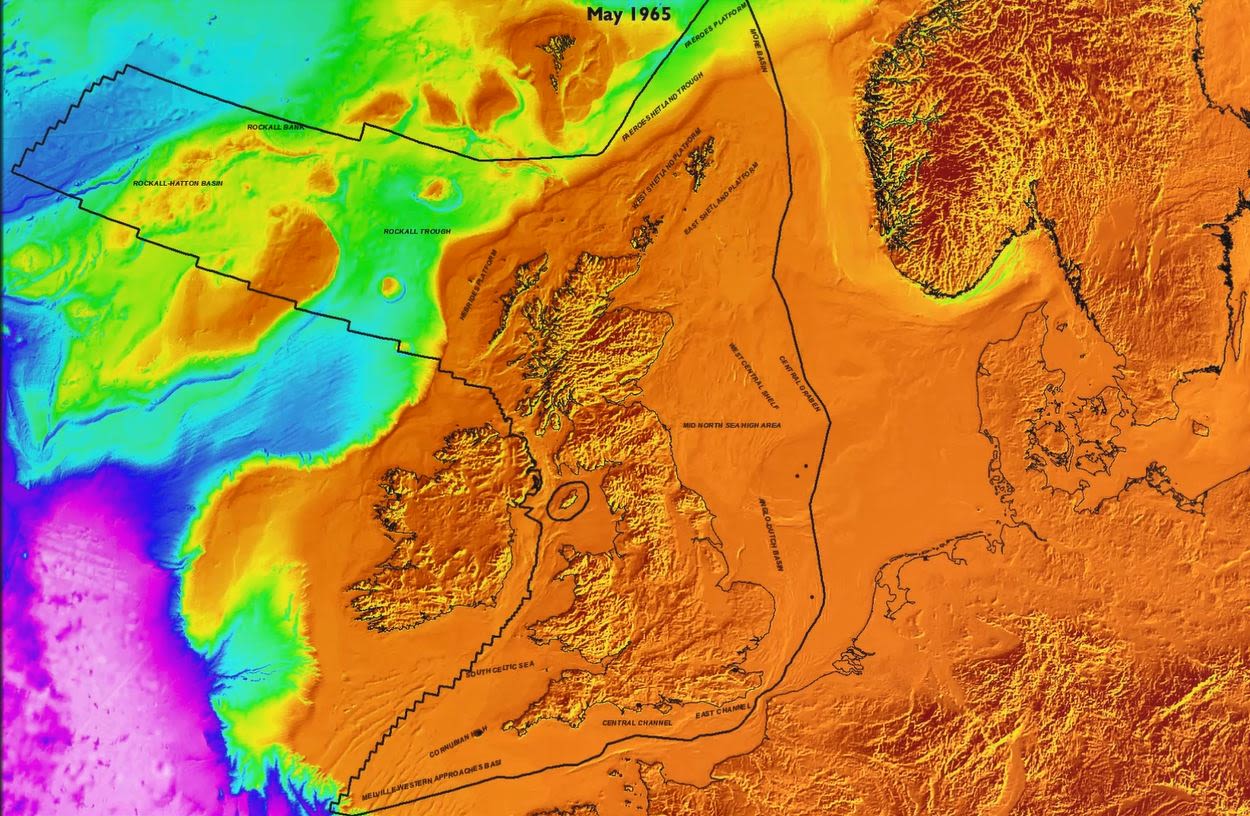Unearthing oil and gas potential within volcanic landscapes
By analysing volcanic rocks under the seabed, our researchers are identifying areas for oil and gas exploration.

Even as the world transitions towards more sustainable energy sources, the global need for oil and gas is set to stay the same until at least 2040.
With the North Sea in overall production decline, the UK Continental Shelf (UKCS) is coming under greater scrutiny to find fields and petroleum resources that could ensure future energy security for the UK.
Studies led by University of Aberdeen geologist, Dr Nick Schofield have been at the forefront of allowing the industry to understand the challenging geology that lies beneath the seabed around the UKCS, particularly in relation to buried ancient volcanic landscapes.
Volcanic rocks in ancient landscapes
The team has evaluated the exploration potential of two areas: Rockall and the Rattray Volcanic Province. Situated near the Western Isles, the Rockall Basin is one of the most challenging environments on earth for hydrocarbon exploration.


The area experiences short weather windows and its remote location means long distances between supporting infrastructure. This harsh environment coupled with challenging geology has led to little hydrocarbon exploration in the area, which is equivalent to the size of the entire North Sea.
Only 12 wells have been drilled, making it one of the most underexplored areas of the UKCS. Similarly, the Rattray Volcanic Province in the Central North Sea has been deemed unsuitable for oil exploration for many years.
It was assumed that empty magma chambers were hidden below the seabed - the remains of three volcanoes that erupted 165 million years ago - and as a result, 7,000sq km of the Central North Sea was dismissed as a potential zone for exploration.

Analysing volcanic rocks

In 2017, the Rockall Basin Project was funded by the Oil and Gas Authority (OGA) as part of a wider initiative to encourage hydrocarbon exploration in unexplored areas of the UKCS. By studying geophysical, seismic data from the OGA’s Frontiers Basin Research Programme, the team gained a clearer understanding of the Rockall Basin’s past.
Closer examination of early drilling results, and analysis of volcanic rocks under the surface of the seabed, allowed the team to better understand the common misconceptions surrounding Rockall and gain new insights into the geology of the wider area. These insights suggested that previous attempts at drilling may have been hampered by this initial misunderstanding of the basin’s structure, leading researchers to believe that oil and gas may have instead migrated to the outer edges of Rockall, away from operators’ previous exploration targets.
Challenging misconceptions
More recently, Dr Schofield and PhD student Ailsa Quirie collaborated with Heriot Watt University and the University of Adelaide to dismiss the theory of Jurassic volcanoes in the Rattray Volcanic Province. By analysing 3D images, the team challenged the idea that the North Sea had been born by a series of large volcanoes, suggesting instead that it had been a series of small fissures erupting lavas. These findings have prompted discussion within the industry, to assess if the area could now be suitable for oil and gas exploration, as it does not contain large frozen chambers of magma beneath the surface.
Dr Schofield said: “Our objective for these projects was to fully evaluate the exploration potential of the areas, to provide the industry with a clearer understanding of where drilling opportunities may lie. As a result, we determined that initial analysis of Rockall may have been misleading for operators, with areas thought to hold ‘trapped oil’ actually created by volcanic intrusions. These volcanic rocks have had a significant effect on the evolution of the Basin and the movement of hydrocarbons, and we continue to work closely with the industry to share further insights that may encourage future exploration in the Rockall area."

Schematic map of Rockall
Schematic map of Rockall

Seismic and geoseismic interpretation
Seismic and geoseismic interpretation

Rattray Volcanic Province
Rattray Volcanic Province

“Similarly, our findings from the Rattray Volcanic Province have completely overturned decades of accepted knowledge. By combining 3D seismic data donated to us by PGS with well data, we showed that the magma chambers of three Jurassic-era volcanoes didn’t exist. This is a huge unexplored area that could have the potential for significant oil and gas activity in the future.
“The findings also have implications for hydrocarbon fields which sit on top of the volcanic rocks, where sand reservoirs were deposited over a barren and rugged volcanic field. These fields have been producing for nearly 30 years so better understanding of this may help us to extract more oil from existing mature assets.”
Impact
- Studies identified the Rockall Basin and Rattray Volcanic Province as potential areas for future exploration activity
- Findings have increased the prospects of finding oil and gas in one of the world’s most prolific production regions
- The detailed geological analysis of Rockall has been made available to the wider industry by the Oil and Gas Authority’s efforts to maximise economic recovery in the UKCS
- Dr Schofield’s research concepts have been exported to other basins around the globe, with Shell Norway funding a PhD to examine the interaction of volcanics with the petroleum system on the Norwegian Shelf, based on Dr. Schofield’s work in the Faroe-Shetland Basin and Rockall.
- Based on the findings, CNOOC has funded a PhD with the University of Aberdeen to examine the effects on two of their fields in the Central North Sea which sit atop the Rattray Volcanics.
- Companies have directly used Dr Schofield’s concepts and work in licensee applications for hydrocarbon exploration



